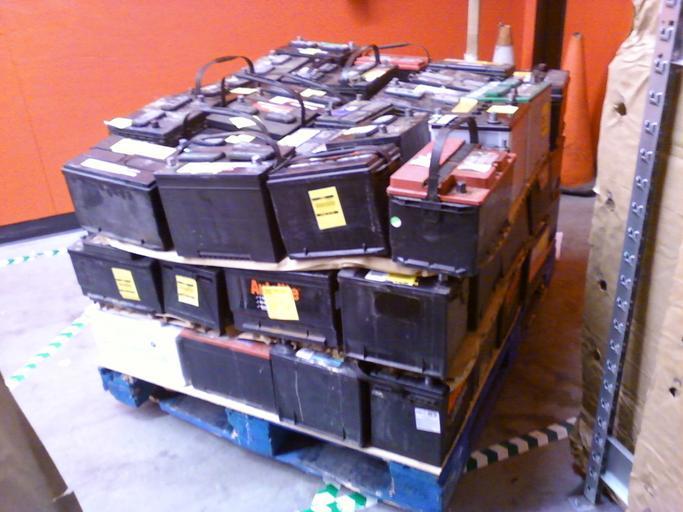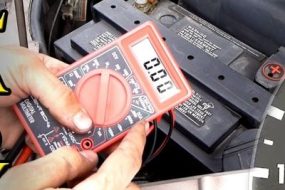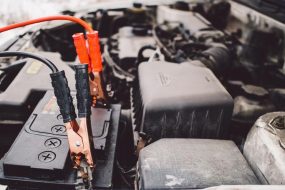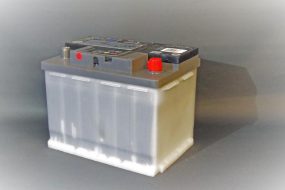
As a crucial component in the operation of vehicles, automotive batteries play a pivotal role in powering various electrical systems. Despite their essential role, these batteries possess inherent dangers, making their handling, transportation, and disposal a careful thing to do. However, the question is, automotive batteries are an example of which hazard class?
Automotive batteries are classified as hazardous materials, and they fall under Hazard Class 8, which encompasses corrosive materials.
Automotive Batteries are an Example of Which Hazard Class?
“Automotive batteries are an example of a hazardous material under hazard class 8 which are made up of corrosive materials.”
Hazard Class 8, as defined by various regulatory bodies such as the United Nations Model Regulations on the Transport of Dangerous Goods, encompasses corrosive substances which are materials that can cause damage to living tissues and materials through chemical action.
Automotive batteries fit this classification due to the presence of a corrosive electrolyte, a substance in the battery that poses harm to both the environment and human health.
For a better understanding of why automotive batteries fall under Hazard Class 8, let’s examine their composition. Most automotive batteries make use of lead-acid technology, consisting of lead dioxide as the positive plate, sponge leads as the negative plate, and a sulfuric acid electrolyte solution. It is this sulfuric acid electrolyte that renders the batteries corrosive.
Sulfuric acid is a highly corrosive substance known for its ability to react with various materials, causing damage through chemical corrosion.
When a battery is in use or is damaged, the sulfuric acid can leak, posing a threat to the surrounding environment and individuals handling the battery. “The corrosive nature of sulfuric acid is the primary reason for the placement of automotive batteries in Hazard Class 8.”
However, the corrosive nature of the electrolyte in automotive batteries raises safety concerns during handling. Individuals who come into contact with leaked electrolytes risk skin burns, eye damage, and respiratory irritation. Therefore, proper safety precautions, such as wearing protective gear like gloves and goggles, are essential when handling automotive batteries.
Be that as it may, the classification of automotive batteries under Hazard Class 8 also affects their transportation. Regulatory bodies, including the Department of Transportation (DOT) in the United States, have specific guidelines and regulations for the transportation of hazardous materials.
These regulations include packaging requirements, labeling, and documentation to ensure the safe transport of automotive batteries and mitigate potential risks during transit.
To meet transportation regulations, automotive batteries must be packaged in containers that can withstand the corrosive nature of the electrolyte.
Packaging materials must be resistant to corrosion and leakage to prevent the release of hazardous substances during transport. The packaging also needs to be marked with appropriate labels indicating the presence of corrosive materials.
Clear and standardized labeling is an important aspect of Hazard Class 8 regulations. Labels on automotive battery packages provide information about the potential hazards, allowing those involved in transportation to take necessary precautions. Common labels include the Class 8 diamond-shaped placard with the corrosive symbol and appropriate hazard codes.
Accurate documentation is also important for the transportation of automotive batteries classified under Hazard Class 8. Shipping papers must clearly outline the nature of the hazardous materials, the quantity being transported, emergency response information, and contact details for responsible parties.
This documentation ensures that emergency responders and those handling the shipment are informed about the potential risks and proper response procedures.
Proper disposal of automotive batteries is another critical aspect influenced by their classification as Hazard Class 8. Due to the corrosive nature of the electrolyte, it is imperative to handle the disposal of automotive batteries with care to prevent environmental contamination.
Improper disposal of automotive batteries can lead to severe environmental consequences. The corrosive electrolyte, if released into the soil or water, can contaminate ecosystems and pose a threat to plant and animal life.
Additionally, lead, a component of automotive batteries, is a toxic substance that can have detrimental effects on both human health and the environment. The penalties for improper disposal of automotive batteries includes fines and legal consequences.
Conclusion
Automotive batteries, despite their essential role in powering vehicles, are classified as Hazard Class 8 due to the corrosive nature of their sulfuric acid electrolyte. This classification has implications for the safety of those handling the batteries, as well as for transportation and disposal practices.
Adherence to regulatory guidelines, proper packaging, labeling, and documentation during transportation, and responsible disposal through recycling programs are essential to mitigate the potential hazards associated with automotive batteries.
By understanding and respecting the hazardous nature of these batteries, we can ensure the safe and sustainable use of automotive batteries.




